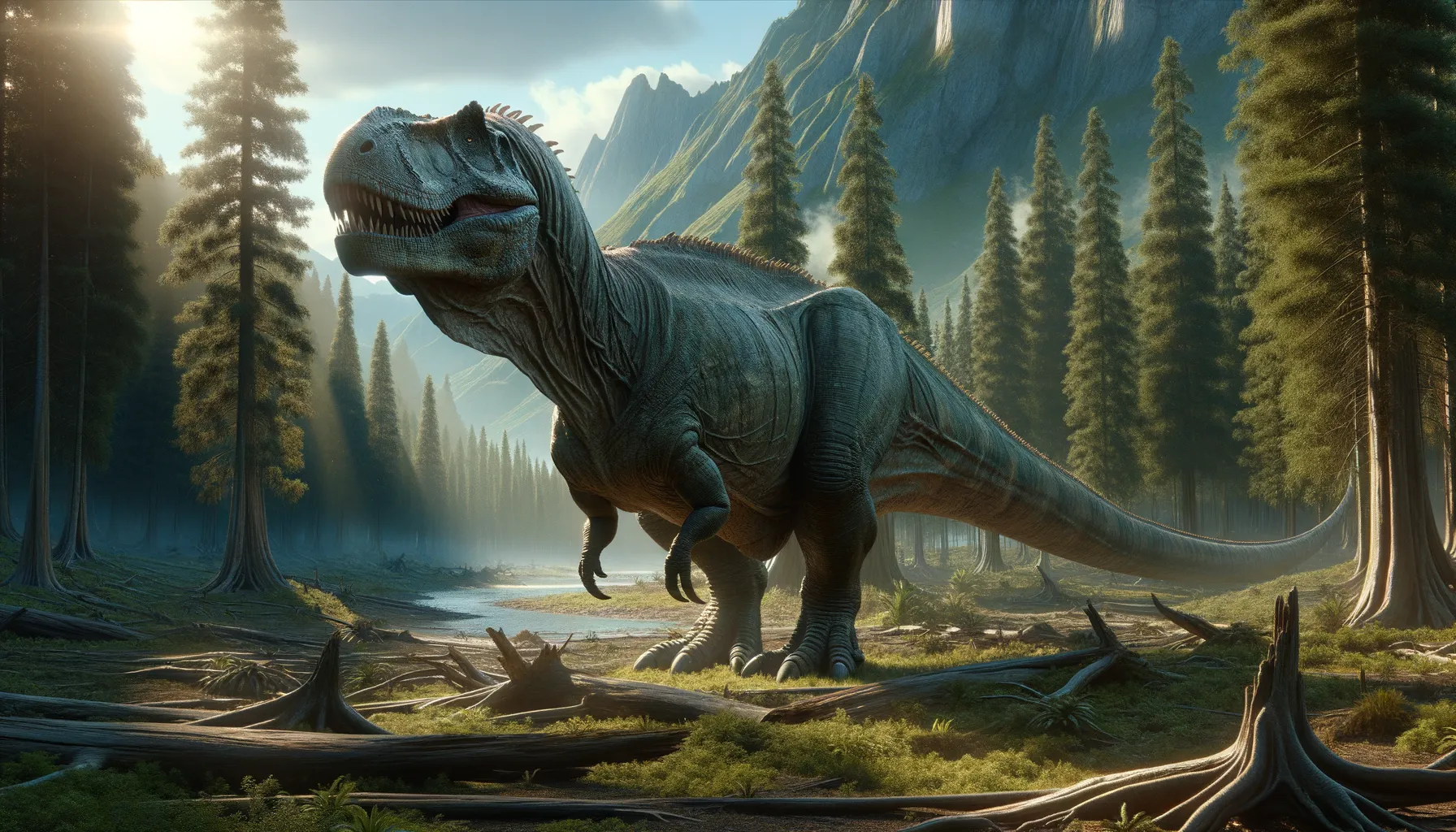
Iguanacolossus
A gentle giant of the Cretaceous age!
Period
Cretaceous
Length
Roughly 9 to 10 meters long.
Height
Around 3 meters tall at the hips.
Weight
Approximately 3 to 5 tons.
Iguanacolossus was a large herbivorous dinosaur that roamed the lands of what is now North America during the Cretaceous period. Known for its robust build, this dinosaur is estimated to have been about 9 to 10 meters long and weighed between 3 to 5 tons. Its size and strength likely helped protect it from predators, making it a dominant presence in its ecosystem.
Diet
Iguanacolossus primarily fed on plants. Its strong jaws and teeth were well-suited for grinding tough vegetation, which it likely foraged in vast quantities. As a herbivore, it played a critical role in its environment by aiding in plant control and growth cycles.
Hunting
Being a herbivore, Iguanacolossus did not hunt other animals. Instead, it used its resources to locate and consume various plant materials. However, it had to remain vigilant to avoid carnivorous predators that might have seen it as prey.
Environmental challenges
Living during the Cretaceous period, Iguanacolossus faced environmental challenges such as changing climates and competition for food sources. Seasonal variations in plant availability may have required it to travel large distances to find sustenance. Additionally, the rise of flowering plants during this period introduced new dietary opportunities and competition.
Speed
Moderately fast, enabling it to escape predators.
Lifespan
Estimated at around 20 to 30 years.
First discovery
Discovered in North America's Cedar Mountain Formation.
Fun Facts
- Iguanacolossus was a dinosaur that lived approximately 125 million years ago during the Early Cretaceous period.
- Its name means 'Iguana Colossus,' which refers to its large size and iguana-like appearance.
- Iguanacolossus was a herbivorous dinosaur that belonged to the iguanodontians, a group known for their thumb spikes and beak-like mouths.
- It is estimated to have been about 30 feet long, roughly the length of a large truck.
- Fossils of Iguanacolossus were first discovered in the Cedar Mountain Formation in Utah, USA.
- The discovery of Iguanacolossus has provided valuable insights into the diversity of ornithopod dinosaurs in North America.
- Despite its intimidating name, Iguanacolossus was a gentle giant, feeding mostly on plants like conifers and ferns.
Growth and Development
Iguanacolossus experienced rapid growth from birth, as is common among large dinosaurs. Juveniles would have been vulnerable to predators, relying on rapid development and potential herd protection for survival. Its bone structure suggests a specific growth pattern that allowed it to attain its massive size efficiently.
Habitat
This dinosaur inhabited environments with abundant vegetation, such as floodplains and forests. These areas provided ample food resources and protection from predators. The climate during its time was generally warmer, supporting a diverse group of plant life that it could feed on.
Interaction with other species
Iguanacolossus likely interacted with a variety of other herbivorous and carnivorous dinosaurs. Its size might have deterred some predators, while it competed with other herbivores for plant resources. It may have lived in groups, offering additional protection against threats and facilitating social interactions.
Natural lifespan
In the absence of catastrophic events, it lived for two to three decades.
Reproduction
Reproduction involved laying eggs in nests, which were likely guarded until hatching. The parental care practices are unknown, but young would have needed protection from predators. The survival strategy may have involved laying numerous eggs to ensure that some offspring reached maturity.
Social behaviour
Iguanacolossus may have exhibited social behaviors typical of herd animals. Group living could provide protection and enhanced foraging success. Communication might include vocalizations or visual displays to maintain social order and respond to threats.
Fossil locations
Fossils have primarily been found in the Cedar Mountain Formation in North America, revealing important information about its structure and living habits. These discoveries have expanded the understanding of prehistoric dinosaur distribution and ecosystem dynamics in this region.
